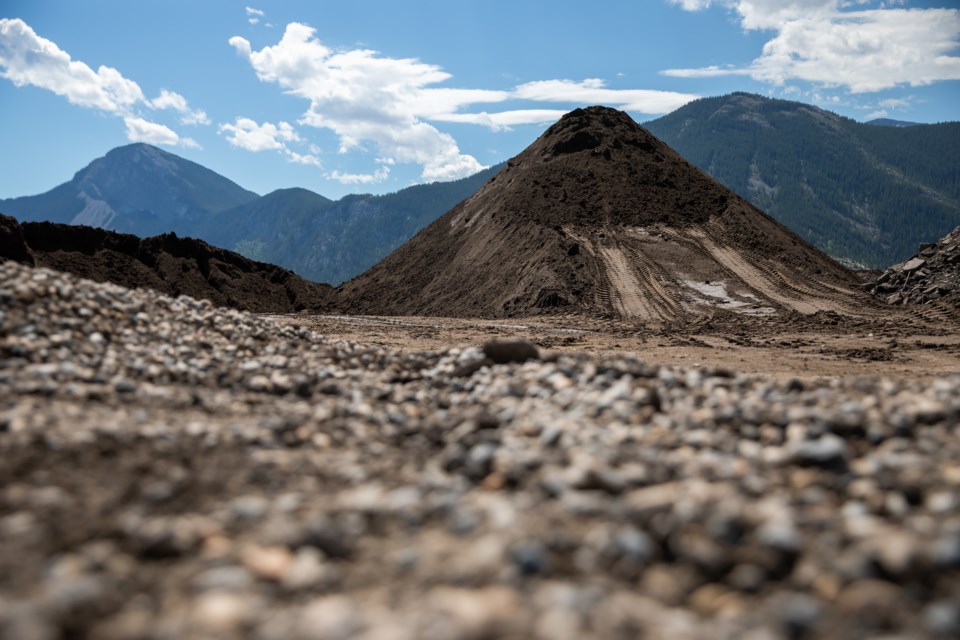CANMORE – With a mostly new board, the Bow Valley Waste Management Commission will soon begin work on a strategic actions review for the new term.
The work will likely begin in the late summer or early fall to devise a strategic plan to help guide the path for the commission and determine its priorities for the coming years.
“That’s the board’s primary responsibility is to direct the organization, so setting the direction strategically for administration to go out and execute helps both the organization and administration,” said Andrew Calder, the BVWMC’s CAO. “It confirms what we’re doing on the ground is what the board wants to see and that we’re working in tandem.”
As the Bow Valley’s main waste management handler, a primary goal has been diverting as much waste as possible to limit waste and extend the life of the landfill of the Francis Cooke Regional Resource Recovery Centre and Class III Landfill facility.
“Yes, we’re a landfill but resource recovery is a big part of what we do as well,” Calder said. “We’re always looking to push the envelope and try to divert as much recyclable material, process it and take it back into the region for reuse. That’s part of the circular economy that’s important for everyone.”
Calder called the strategic planning an opportunity for the board to “protect and direct” in reference to an oft-used line by former long-time commission chair Paul Ryan.
The previous action plan was released in 2018 and focused on communicating and educating individuals and industry on sorting material to help diversion of waste, working towards zero waste goals, recognizing recyclable options and prohibited materials and working with municipal goals and initiatives.
A staff report noted the BVWMC – which was established in 2004 – has long had the goal of extending the Francis Cooke Regional Resource Recovery Centre and Class III Landfill facility life. The report predicted between 30-50 years of landfill space, but that diversion rates were more than 70 per cent by 2020.
In 2020, 83,669 tonnes of waste were collected, with Canmore contributing 57.2 per cent and Banff 34 per cent.
At its Thursday (May 19) meeting, the board approved a surplus of $101,713 from 2021 to be moved into reserves.
Calder noted the strong reserve position the commission is in, with reserves such as the landfill closure at $1.67 million, the replacement reserve at $1.01 million and the Class III recycling and landfill cell development reserves each at more than $600,000.
The commission approved the operating agreement renewal for the West Regional Transfer Station in Banff. The station – built in 2005 – is owned by the commission but operated by the Town of Banff.
The commission received the Alberta Recycling Management Authority’s (ARMA) ePilot award for its success in diverting electronic waste through its expanded electronics pilot project.
The project had residents bring in old electronics ranging from microwaves, DVD players to phones and ran from Sept. 2020 to Dec. 31, 2021. According to ARMA, 2.4 million electronic units were collected in the province.
With the landfill and resource recovery facility being in the Municipal District of Bighorn, a per capita of 6.5 kilograms was collected. The Town of Canmore also placed fourth.
“All of our Bow Valley municipalities work to make ARMA’s recycling programs a success. … We would like to thank our residents and businesses for doing the right thing to keep electronics separate and helping us keep these items out of landfills and in the circular economy,” said Peter Duck, the regional coordinator for the BVWMC.
Calder said that zero waste is a challenging goal, but that it’s important to strive for as much diversion as possible. He pointed to the electronics program as an example of filling a gap existing until it was brought in about five to six years ago.
“We weren’t allowed to bury electronic waste. We would send drivers back with those items if they were found in loads and they would take them to the towns since they were on the ARMA program,” he said. “We may as well have the opportunity for our customers and make it convenient for them. If you’re trying to change people’s behaviours, convenience is key.”




